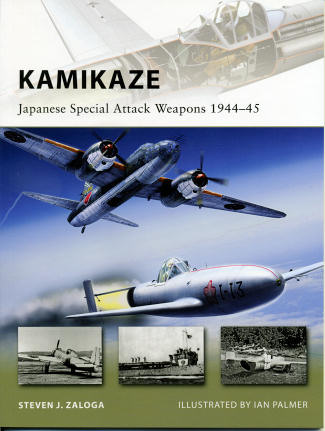 The most
effective Japanese weapon of WWII was not a tank, a ship, a gun, a torpedo or an
aircraft. It was the human directed suicide weapon known as the Kamikaze. Named
after the storm that saved Japan from a Mongol invasion, the Kamikaze or 'Divine
Wind' was rarely called that by the Japanese forces, preferring the term 'Tokku'
or Special Attack. This was as much due to the emperor's ambivalence regarding
human sacrifice on a large scale as a way to fight a war.
The most
effective Japanese weapon of WWII was not a tank, a ship, a gun, a torpedo or an
aircraft. It was the human directed suicide weapon known as the Kamikaze. Named
after the storm that saved Japan from a Mongol invasion, the Kamikaze or 'Divine
Wind' was rarely called that by the Japanese forces, preferring the term 'Tokku'
or Special Attack. This was as much due to the emperor's ambivalence regarding
human sacrifice on a large scale as a way to fight a war.
Though it was not at all rare for Japanese military men
to sacrifice their lives when the going got desperate, it wasn't until the
shellacking at the Battle of the Philippine Sea that there was serious thought
given to using Tokku on a widespread basis. Both the Army and the Navy were
involved and initially, it was the air forces that were involved. Though other
methods were tried, it was the aircraft that caused the greatest amount of
damage. These were directed against invading ships and while the number that
actually hit ships was only a small percentage of those that were sent out,
their mere presence caused changes in US force procedures.
If the aircraft had a major fault, it was that the bombs
they carried were rarely enough to cause major damage to the ship they hit. It
isn't to say that ships were not sunk or very badly damaged, but most of this
was the fire following the hit as a half load of aviation fuel was spread over
the area. Yes, these planes had enough to get back to base in case they couldn't
find a target so those stories about having enough fuel for a one way mission
are just urban legend.
In addition to outfitting planes with bombs, some were
specially developed for the task. None of these were particularly successful,
though the rocket powered Ohka had the best record. In addition to special
aircraft, there were manned torpedoes, special submarines, special attack tanks,
frogmen, speed boats and a variety of other methods that were developed. Many of
these later weapons and methods were held in reserve for what was seen as the
inevitable invasion and so never really used.
In this book, author Steven J. Zaloga covers all of the
various equipment and methods that were seriously considered and developed in
the last year or so of the Pacific War. The missions they carried out and their
success or lack thereof is closely evaluated. In all, it makes for a fascinating
book on the subject that is not only full of period photos but includes the fine
art work of Ian Palmer. It is a book I found a delight to read and I know you
will as well.
July 2011
For more on the complete line of Osprey books,
visit www.ospreypublishing.com. In the US, it is
Osprey Direct at 44-02 23rd St, Suite 219, Long Island City, NY 11101., where you can
get a catalogue of available books.
If you would like your product reviewed fairly and fairly quickly, please contact the editor or see other details in the Note to
Contributors.
 The most
effective Japanese weapon of WWII was not a tank, a ship, a gun, a torpedo or an
aircraft. It was the human directed suicide weapon known as the Kamikaze. Named
after the storm that saved Japan from a Mongol invasion, the Kamikaze or 'Divine
Wind' was rarely called that by the Japanese forces, preferring the term 'Tokku'
or Special Attack. This was as much due to the emperor's ambivalence regarding
human sacrifice on a large scale as a way to fight a war.
The most
effective Japanese weapon of WWII was not a tank, a ship, a gun, a torpedo or an
aircraft. It was the human directed suicide weapon known as the Kamikaze. Named
after the storm that saved Japan from a Mongol invasion, the Kamikaze or 'Divine
Wind' was rarely called that by the Japanese forces, preferring the term 'Tokku'
or Special Attack. This was as much due to the emperor's ambivalence regarding
human sacrifice on a large scale as a way to fight a war.